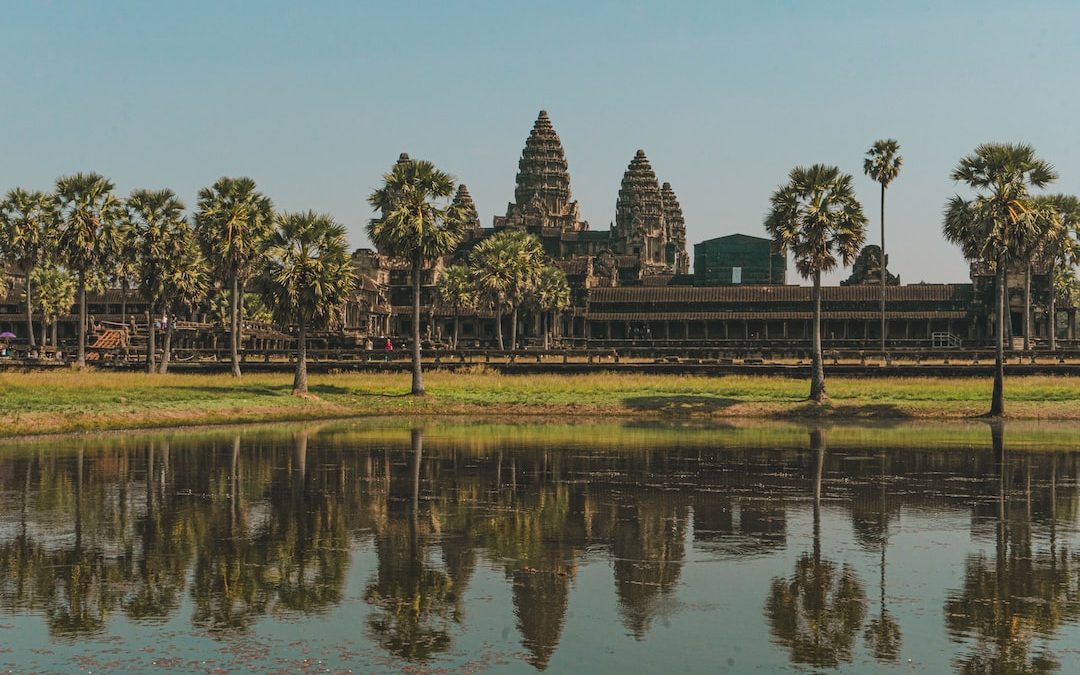Table of Contents
Exploring World Heritage Sites in Asia
Asia is a continent rich in cultural heritage and natural wonders. Across its expansive landscape, the continent holds some of the world’s most famous World Heritage Sites. Spanning the entire continent, these sites are the best way to explore the culture, history and beauty of Asia. From the majestic mountains of Bhutan to the ancient monuments of India, here is a guide to the top World Heritage Sites in Asia.
1. Angkor Wat, Cambodia
The largest religious monument in the world, Angkor Wat is a sprawling temple complex located in Cambodia. Built in the 12th century, the temple is a testament to the Khmer Empire’s engineering and architectural prowess. The complex is home to an array of ancient structures, including the iconic central temple and its five towers. The sprawling grounds also feature intricate stone carvings, intricate bas-reliefs and towering statues. Visiting Angkor Wat is a must for anyone exploring the ancient and modern wonders of Asia.
2. Great Wall of China
The Great Wall of China is the world’s longest man-made structure, stretching over 8,851 kilometers across northern China. Built over several centuries, the wall was constructed to protect the Chinese Empire from invasion. Today, the wall is one of the most iconic symbols of China, and is a popular tourist destination. Visitors can explore the ancient fortifications and take in the breathtaking views of the surrounding countryside.
3. Taj Mahal, India
The Taj Mahal is an iconic white marble mausoleum in Agra, India. Built in the 17th century by Mughal Emperor Shah Jahan, the Taj Mahal is a symbol of love and devotion. The site is a stunning example of Mughal architecture, featuring a sprawling complex of gardens, chambers and courtyards. Visitors can explore the grandeur of the site, marveling at the intricate inlay work and stunning marble edifices.
4. Borobudur, Indonesia
Built in the 9th century, Borobudur is a stunning Buddhist temple located in Indonesia. Located atop a hill in the Kedu Valley, the temple is a masterpiece of Buddhist architecture. Its nine stacked platforms feature hundreds of detailed reliefs and stupas. Visitors can explore the grounds and take in the incredible views of the surrounding landscape.
5. Gangtey Valley, Bhutan
The picturesque Gangtey Valley is located in the western region of Bhutan. The valley is home to a wide variety of flora and fauna, including the rare black-necked crane. The area is also home to several monasteries, including the historic Gangtey Monastery. Visitors can explore the valley and take in the stunning views of the Himalayas.
6. Ha Long Bay, Vietnam
Vietnam’s Ha Long Bay is a UNESCO World Heritage Site and one of the most incredible natural wonders of Asia. The bay is home to thousands of limestone islands and islets, creating a stunning landscape of caves, grottoes and hidden lagoons. Visitors can explore the bay by boat or kayak, or take a cable car to the summit of nearby Cat Ba Island.
7. Banaue Rice Terraces, Philippines
The Banaue Rice Terraces are 2000-year-old terraced fields located in the Philippine Cordilleras. The terraces are a testament to the ingenuity of the Ifugao people, who built the fields to increase rice production. The terrace walls are made of mud and stone, and are still used to farm rice today. Visitors can explore the terraces and take in the views of the surrounding mountain range.
8. Huanglong Scenic and Historic Interest Area, China
Huanglong Scenic and Historic Interest Area is a stunning nature reserve located in China’s Sichuan Province. The area is home to a wide variety of flora and fauna, including the endangered giant panda. Visitors can explore the area by foot, taking in the views of the snow-capped mountains and colorful valleys. The area is also home to Buddhist monasteries, temples and ancient ruins.
9. Mount Fuji, Japan
Mount Fuji is the highest mountain in Japan and one of the country’s most iconic landmarks. The mountain is a popular tourist destination, with visitors flocking to the area to take in the stunning views of the surrounding countryside. The mountain is also home to several ancient shrines and temples, as well as the world-famous Fujisan Hot Springs.
10. Meiji Shrine, Japan
The Meiji Shrine is a Shinto shrine located in Tokyo, Japan. The shrine was built in 1920 to honor the Meiji Emperor and Empress. It is a popular tourist destination, featuring a sprawling complex of gardens, shrines and torii gates. Visitors can explore the grounds and take in the tranquility of the site.
11. Bagan, Myanmar
Bagan is an ancient city located in Myanmar. The city is home to thousands of ancient pagodas, temples and monasteries. Built between the 11th and 13th centuries, the monuments are a testament to the artistic and architectural prowess of the region. Visitors can explore the grounds and take in the views of the surrounding plains.
12. Jeju Island, South Korea
Jeju Island is a volcanic island off the coast of South Korea. The island is home to several stunning natural attractions, including Hallasan, the highest mountain in South Korea. The island is also home to several ancient monuments and temples, as well as the Jeju Volcanic Island and Lava Tubes, a UNESCO World Heritage Site. Visitors can explore the island by foot or take a cable car to the summit of Hallasan.
Asia is a continent filled with ancient wonders and natural beauty. From the ancient temples of Cambodia to the lush valleys of Bhutan, there is no shortage of incredible World Heritage Sites to explore in Asia. Whether you are looking to explore the history and culture of the region or take in the incredible landscapes, these sites are the perfect way to experience the best of Asia.












